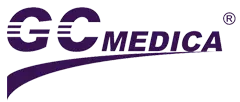-
Laparoscopic & Endoscopic Products
-
Laparoscopic Procedures
- Heated Insufflation Tube
- Laparoscopic Smoke Filter
- High FLow CO2 Laparoscopic Insufflation Filter Tube Set
- Veress Needle
- High Flow Heated Insufflation Tube
- Arthroscopy Irrigation Set
- Disposable Bladeless / Bladed Trocar with Thread / Balloon
- Disposable Wound Protector
- Disposable Height Changeable Wound Protector
- Retrieval Bag
- Laparoscopic Suction Irrigation Set
- Laparoscopic Insufflator
- Endoscopy Care and Accessories
-
Laparoscopic Procedures
- Respiratory & Anesthesia
- Cardiothoracic Surgery
- Gynaecology
-
Urology
- CathVantage™ Portable Hydrophilic Intermittent Catheter
-
Cysto/Bladder Irrigation Set
- M-easy Bladder Irrigation Set
- B-cylind Bladder Irrigation Set
- S-tur Bladder Irrigation Set
- S-uni Bladder Irrigation Set
- B-uro Bladder Irrigation Set
- Premi Bladder Irrigation Set
- J-pump Bladder Irrigation Set
- J-tur Bladder Irrigation Set
- H-pump Bladder Irrigation Set
- Sup-flow Bladder Irrigation Set
- Maple Irrigation Set
- Peony Irrigation Set
- Nelaton Catheter
- Urinary Drainage Bag
- Urinary Drainage Leg Bag
- Enema Kits
- Sitz Bath Kits
- Click Seal Specimen Container
- Silicone Male Catheter
- Spigot Catheter and Adaptor
- Sandalwood Irrigation Set
- Freesia Irrigation Set
- Daffodil Irrigation Set
- Single-Use Digital Flexible Ureteroscope
- Enteral Feeding Products
- Dental
- Fluid Management
- Warming Unit and Warming Blanket
-
Operating Room Necessities
- Nasal and Oral Sucker
- Disposable Medical Equipment Covers
- Magnetic Drape / Magnetic Instrument Mat
- Suction Handle
-
General Surgery
- Perfusion Atomizer System
- Gastric Sump Tube
- Surgical Hand Immobilizer / Lead Hand for Surgery
- Administration Set for Blood
- Ear/Ulcer Syringe
- Bulb Irrigation Syringe
- Toomey Irrigation Syringe
- Mixing Cannula
- Basin Liner/Basin Drape
- Medical Brush
- Sponge Stick
- Suture Retriever
- Needle Counter
- Disposable Calibration Tube
- Heparin Cap
- 100ML Bulb Irrigation Syringe
- Scleral Marker
- Surgical Light Handle
- Mucosal Atomization Device
- Durable Medical Equipment
- Patient Handling System
- PVC-FREE Medical Device
- Emergency
-
Patient Air Transfer Mattress Online WholesaleDec 17 , 2024
-
Cystoscopy Irrigation Set Online Wholesale | GCMEDICADec 17 , 2024
-
Patient Warming Device and Blanket Online wholesaleDec 16 , 2024
-
CathVantage™ Twist Intermittent Catheter | GCMEDICASep 20 , 2024
-
Single-Use Digital Flexible Ureteroscope | GCMEDICASep 20 , 2024
Gastric Feeding Tubes Ensure Patients Receive Proper Nutrition
1. A gastric feeding tube is a medical device that is inserted into a patient's stomach to supplement the patient's diet
Gastrointestinal feeding tubes are used in patients who cannot eat, and sometimes in patients who refuse to eat. IVF requires some education, as patients and/or caregivers must be taught a nutritionally balanced and IVF-friendly formula. As a medical tool, gastric feeding tubes can greatly improve patient outcomes by ensuring they receive proper nutrition.
There are two basic types of feed tubes. A nasogastric or natural gas tube is passed through a patient's nose into his or her stomach. Such tubes are often used for respite care, where patients only need a gastric feeding tube for a few days. NG tubes can be very uncomfortable for patients. A gastric or G-tube is inserted into the abdominal wall with the aid of an endoscope. The tube is designed for long-term use, and when properly installed, the patient can thread the tube in and out very comfortably.
When a gastric feeding tube is to be inserted through the abdominal wall, the patient needs to be sedated or the procedure can be uncomfortable. The endoscope goes down the esophagus and into the stomach. The bright light helps doctors see the endoscope through the patient's abdomen, and the endoscope provides a clear view of the inside of the stomach. Then, a needle is pushed into the abdomen and used to guide the gastric feeding tube into place.
2. Patients may experience discomfort as the surgical site heals in the days following insertion of the feeding tube
It's also important to keep the spot clean, changing the gauze and wiping it down regularly. After the site has healed, the caregiver must check the tube regularly to make sure it doesn't move out of place. Pressure on the tube can cause internal damage, as can partial removal of the tube.
To feed a patient through a gastric tube, the valve on the gastric tube is opened to allow the flow of food formula. Many companies produce commercial formula for use in milk tubes. Some doctors recommend that people only use commercial products because they are less likely to cause blockages and they are formulated to provide complete nutrition. The patient's stomach normally digests the food, extracting available nutrients for the patient's body, and passing the rest out as waste.

